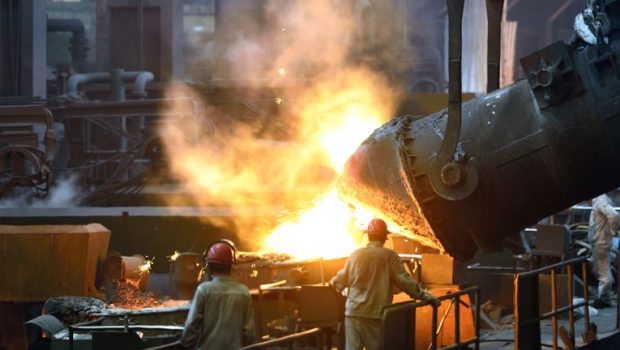We Think Carpenter Technology (NYSE:CRS) Has A Fair Chunk Of Debt
David Iben put it well when he said, 'Volatility is not a risk we care about. What we care about is avoiding the permanent loss of capital.' It's only natural to consider a company's balance sheet when you examine how risky it is, since debt is often involved when a business collapses. As with many other companies Carpenter Technology Corporation (NYSE:CRS) makes use of debt. But should shareholders be worried about its use of debt?
When Is Debt A Problem?
Generally speaking, debt only becomes a real problem when a company can't easily pay it off, either by raising capital or with its own cash flow. If things get really bad, the lenders can take control of the business. However, a more usual (but still expensive) situation is where a company must dilute shareholders at a cheap share price simply to get debt under control. Of course, plenty of companies use debt to fund growth, without any negative consequences. When we examine debt levels, we first consider both cash and debt levels, together.
Check out our latest analysis for Carpenter Technology
What Is Carpenter Technology's Net Debt?
You can click the graphic below for the historical numbers, but it shows that as of March 2022 Carpenter Technology had US$990.9m of debt, an increase on US$694.3m, over one year. On the flip side, it has US$393.9m in cash leading to net debt of about US$597.0m.
A Look At Carpenter Technology's Liabilities
We can see from the most recent balance sheet that Carpenter Technology had liabilities of US$633.8m falling due within a year, and liabilities of US$1.25b due beyond that. Offsetting these obligations, it had cash of US$393.9m as well as receivables valued at US$336.2m due within 12 months. So its liabilities total US$1.15b more than the combination of its cash and short-term receivables.
This deficit is considerable relative to its market capitalization of US$1.69b, so it does suggest shareholders should keep an eye on Carpenter Technology's use of debt. Should its lenders demand that it shore up the balance sheet, shareholders would likely face severe dilution. The balance sheet is clearly the area to focus on when you are analysing debt. But ultimately the future profitability of the business will decide if Carpenter Technology can strengthen its balance sheet over time. So if you're focused on the future you can check out this free report showing analyst profit forecasts.
Over 12 months, Carpenter Technology reported revenue of US$1.7b, which is a gain of 14%, although it did not report any earnings before interest and tax. We usually like to see faster growth from unprofitable companies, but each to their own.
Caveat Emptor
Over the last twelve months Carpenter Technology produced an earnings before interest and tax (EBIT) loss. Indeed, it lost US$41m at the EBIT level. When we look at that and recall the liabilities on its balance sheet, relative to cash, it seems unwise to us for the company to have any debt. So we think its balance sheet is a little strained, though not beyond repair. Another cause for caution is that is bled US$107m in negative free cash flow over the last twelve months. So in short it's a really risky stock. The balance sheet is clearly the area to focus on when you are analysing debt. However, not all investment risk resides within the balance sheet - far from it. For example Carpenter Technology has 3 warning signs (and 2 which don't sit too well with us) we think you should know about.
When all is said and done, sometimes its easier to focus on companies that don't even need debt. Readers can access a list of growth stocks with zero net debt 100% free, right now.
Have feedback on this article? Concerned about the content? Get in touch with us directly. Alternatively, email editorial-team (at) simplywallst.com.
This article by Simply Wall St is general in nature. We provide commentary based on historical data and analyst forecasts only using an unbiased methodology and our articles are not intended to be financial advice. It does not constitute a recommendation to buy or sell any stock, and does not take account of your objectives, or your financial situation. We aim to bring you long-term focused analysis driven by fundamental data. Note that our analysis may not factor in the latest price-sensitive company announcements or qualitative material. Simply Wall St has no position in any stocks mentioned.








Gloss